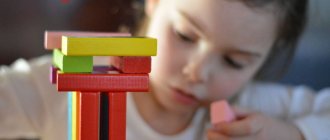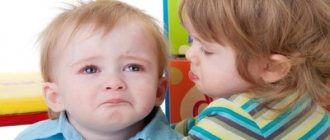THE IMPORTANCE OF FINE MOTOR SKILLS
Fine motor skills of the hands are a unity of coordinated manipulations that are aimed at performing small precise movements with the hands and fingers. Just a few decades ago, parents did not have problems with the motor skills of their children. After all, the children did a lot of things with their own hands: they helped peel vegetables, make pies, do laundry, sort out cereals, tie shoelaces and fasten buttons. Today, most of these activities are done either by adults, allowing children to play, or by specialized machines. Even Velcro shoes and clothes with zippers deprive the child of the opportunity to practice the fine movements of his fingers.
Meanwhile, a lot says about the importance of fine motor skills. Children with weak motor skills are not ready for writing and often lag behind in speech development. All this affects school performance and leads to increased stress on the child’s nervous system.
Among other things, the state of fine motor skills of the hands directly affects the development of the child:
- self-care skills;
- perseverance;
- thinking;
- attention;
- imagination;
- vocabulary;
- memory.
After all, the centers of the cerebral cortex responsible for fine motor skills are adjacent and closely interconnected with the centers responsible for the development of these areas. By activating the fine motor area, we naturally influence the neighboring ones.
HAND DEVELOPMENT NORMS
After 3 years, children’s motor skills become more complex and varied: the percentage of actions that require coordinated hand movements from the child increases.
What should children of this age be able to do in terms of developing fine motor skills?
- To hold objects, they increasingly use their fingers, rather than the palm, as before.
- Able to hold a pen or pencil.
- They can draw lines, circles, polyhedra, redraw crosses and squares.
- They know how to cut paper shapes with scissors.
- Can take off and put on clothes and shoes.
- Grab small objects or parts with your thumb and index finger.
- Build a tower with at least 3 cubes.
- Draw a person consisting of at least 3 elements (head, torso, limbs).
- Take out small objects from a transparent container.
- Unscrew the lids.
- String beads onto wire.
- They can draw with their fingers.
- Scoop the cereal into a spoon from one container to transfer it to another.
- Trace the outline along the dotted line.
- Simple elements are molded from plasticine.
- Fasten and unfasten zippers, clasps, snaps, buttons.
- Sorting small items and cereals.
- Unwrap candy wrappers.
- They tie knots.
- Hand movements occur through coordination with vision.
All these skills need to be developed and improved, preparing little hands for increasingly complex and precise manipulations.
If your baby does not yet know how to do something from this list, it is important to fill this gap in a timely manner. Teach him age-appropriate skills, otherwise he will have problems later: he will have to not only learn new skills, but also catch up with his peers where he lags behind. And this is more difficult.
WHAT CONTRIBUTES TO HANDBOOK DEXTERITY?
There are many ways to make little fingers more skilled. The following games and activities perfectly develop fine motor skills in children aged 3–4 years:
- fastening buttons, snaps, lacing;
- unscrewing lids on jars and bottles;
- rolling pencils, nuts, spools in the palms;
- modeling from plasticine or dough;
- sorting of cereals (peas, beans, buckwheat, rice);
- finger painting on sand, semolina or buckwheat;
- drawing with finger paints or pencils;
- cutting out figures along the contours;
- games with small details (constructor, mosaic, puzzles);
- stringing large beads on fishing line or wire;
- feeling surfaces made of various materials and textures;
- massage with spiked balls.
When your child paints with finger paints, put on things that you don’t mind getting damaged by paints, and cover the table with protective oilcloth to make subsequent cleaning easier.
Most of these activities captivate children 3–4 years old, especially if parents give them the form of an entertaining game. For example, they suggest not just sorting out the cereals, but helping Cinderella go to the ball, not just touching different surfaces, but imagining yourself as a blind Mole from the fairy tale about Thumbelina, and guessing what you touched.
Games for the development of fine motor skills in the second junior group
Games that promote the development of a child's motor skills include the following types of entertainment activities:
- fingered. They are considered a unique way to develop children's speech. Along with the exercises, kids memorize texts, which helps develop attention, memory, imagination, thinking, reaction speed, expressiveness of emotions, etc.;
- origami. Creating paper crafts without using glue is the next option for developing motor skills, which can be interesting for both children and adults;
- lacing is a type of game that is not only useful for general development, but will also help the child in the future;
- games with cereals, sand, beads, bulk substances (stringing, transferring into containers, etc.);
- modeling from clay, dough, plasticine.
Making a model according to traffic rules in kindergarten with your own hands
FINGERS PLAYING
However, the most interesting activity for children is finger games: all kinds of rhymes, tongue twisters, nursery rhymes, mini-performances that are performed only with the help of fingers. Here we present several new options for finger games.
But first, here are a few rules for conducting activities that develop fine motor skills:
- Work with your child regularly, include hand massage, games with small parts, creative activities, and finger exercises in your training program.
- Finger gymnastics should last from 5 to 15 minutes, no more, otherwise the baby will get tired and switch his attention to something else.
- Before starting the exercises, you need to warm up your palms by actively rubbing them against each other.
- Remember that now it is difficult for children to perform movements with both hands at once, so start with one, then repeat with the other, and only after that try to synchronize the hands.
- Keep in mind that the child may not remember all the movements or words of the game the first time, this is normal at their age. Everything will work out gradually.
- The baby will also learn to correlate words with movements during the lessons; if he doesn’t succeed right away, encourage him and help him perform the action.
- Move from simple to complex. If a child is offered an exercise that he cannot do, next time he will simply refuse to play.
- Try to interest your child by organizing games with his favorite characters, melodies, and rhymes.
- Do not exercise if your baby is unwell or in a bad mood. Don't force it. There are no useful games against the will of the player.
Card file of exercises and games with goals according to the Federal State Educational Standard
The card file of exercises according to federal standards includes the following types of classes:
- to relax your arms (hands);
- for the development of motor skills using an unsharpened hex pencil;
- for the development of motor skills using natural materials (cones);
- for the development of motor skills with the help of a prickly massage ball.
The first type includes the following exercises:
- "Fish" in the water;
- “Helicopter”, which involves winding thread around an elastic band or ball;
- “Hedgehog” with palms;
- “Hare and Fox” with quickly and slowly “walking” fingers;
- “A conversation between two”, involving interaction between several group members;
- “Flight of the Birds” with active hand work;
- “Track” with buttons sewn to the fabric;
- “Pebbles” with plasticine laid out in a straight line;
- “Watch” aimed at active movements of the hands;
- “Lock”, which includes movements of the fingers and hands;
- “Spider” - moving fingers along the wall;
- “Scissors” with cutting movements of the fingers;
- “Firefighter”, which involves running your fingers along a “ladder”;
- “Peck fingers” - connecting the thumb with the rest in turn.
The second type includes the following exercises:
- “Pencil rolling” using the palm of your hand;
- “Making fire” with rolling a pencil up and down between your hands;
- "Slide" with rolling a pencil up and down one hand using the other hand;
- “Spinner” with a pencil spinning on the table;
- “Helicopter” with a pencil spinning in the air;
- “Crane” with lifting an object with two fingers;
- “Excavator” with lifting a pencil with your finger;
- “Swing” with swinging a pencil with two connected fingers.
The third type includes the following exercises:
- “Twist the bump” using your palms;
- “Roll the bump” using your palms on the table;
- “Catch the cone” by throwing it from hand to hand.
The fourth type includes the following exercises:
- rolling an object back and forth on the table;
- rolling an object around the table in a circle;
- finger pressure;
- catching a thrown ball;
- pressing on the ball with both hands;
- moving the ball from hand to hand with acceleration.
Topics for open speech therapy classes for certification according to the Federal State Educational Standard
Finger games and exercises
Finger exercises and games include many variations that require small and large objects of different types and densities. Paper, cereals, bulk and small items are suitable for this.
Important! It is best to accompany lessons with sayings in poetic form. Thanks to this, children will develop their speech apparatus and memory.
Many of the exercises will be useful to the baby in the future (for example, the ability to tie shoelaces, fasten buttons).
Finger drawings
Finger drawings as an element of classes are recommended to be done before lunch. During this period, children are especially active. At first, it is worth conducting a lesson for a couple of minutes, gradually increasing the time to 20 minutes without breaks.
For classes you need to purchase special paints, sold in any store. They have a special consistency that does not require adding water. The lid should fit tightly to the jar.
The sheets you choose should be A3 format so that the child can safely draw and the colors are bright. The presence of “CE” on the box means that the product meets world-class standards.
Massage of palms and fingers
Massage is a key point in the development of children's motor skills. The massage includes stroking the arms from fingers to palms, including the hands. Classes are accompanied by tongue twisters and poems.
Finger massage
Note! Before the massage, you need to warm up the baby's hands. The duration of the procedure should not be more than 5 minutes. Massage should be done for 10 days once a month.
EXAMPLES OF FINGER GAMES
So, the development of fine motor skills in children 3–4 years old begins with the simplest games:
- Actively rub your palms and ask your baby to do the same.
- Show your child how siblings greet each other - the fingers of the same name on your hands: touch each other alternately with your little fingers, ring fingers, middle fingers, index fingers and thumbs, telling your baby that this is how brothers greet each other. Let him try again.
- Let the baby imagine that his index and middle fingers are legs that are stomping along a path (for example, into the forest for sweet strawberries). His fingers should precisely walk along the surface of the table.
- And now let him turn into an old grandmother (grandfather) who cannot see well. The doctor prescribed glasses for them (the child uses his thumb and index fingers to pretend to be glasses, bringing them to his eyes).
A little later, when the baby gets used to such exercises, you can start playing with short rhymes, gradually adding longer rhymes and complex movements.
- boat
A hare is swimming in a boat (the child folds his hands in the shape of a boat),
The little bunny calls to swim with him (the baby waves his hands with inviting gestures).
- cat
How painfully does a baby cat bite?
He decided that he saw not a finger, but a mouse!
But I'm playing with you, baby,
And if you start biting, I’ll say: “Come on, shoot!”
When performing this game, the mother takes an old clothespin with a relaxed clamping mechanism so that it does not catch painfully, and “bites” each of the child’s fingers in turn.
- Curlers
The essence of this game is to bend each finger on the baby's hand in turn. To do this, you can use a variety of nursery rhymes. For example, these:
This finger is daddy.
This finger is mommy.
This one here is a grandpa.
This is grandma.
Well, this finger is me.
That's my whole family!
(You need to start counting with your thumb to finish with your little finger)
This brother found a fungus.
It began to cut him.
It was my brother who was frying a mushroom.
This one just ate and ate,
Look how fat he has become!
(Counting, on the contrary, starts with the little finger and ends with the thumb).
Consultation for parents “How to develop fine motor skills in children 3–4 years old”
Lisenkova Tatyana Ivanovna
Consultation for parents “How to develop fine motor skills in children 3–4 years old”
How to develop fine motor skills in children 3-4 years old
A pressing problem in our time is the full development of children from preschool age. An important role in the success of a child’s intellectual and psychophysical development is the formation of fine motor skills .
Fine motor skills of the hands interact with such higher mental functions and properties of consciousness as attention, thinking, optical-spatial perception (coordination, imagination, observation, visual and motor memory, speech. The development of fine motor skills is also important because the entire future life of the child will require the use of precise, coordinated movements of the hands and fingers, which are necessary to dress, draw and write, as well as perform a wide variety of everyday and educational activities.
A child's thinking is at his fingertips. What does it mean? Research has proven that the development of speech and thinking is closely related to the development of fine motor skills . A child's hands are his eyes. After all, a child thinks with feelings - what he feels is what he imagines. You can do a lot with your hands - play, draw, examine, sculpt, build, hug, etc. And the better motor skills are developed , the faster a 3-4 year old child adapts to the world around him!
Scientists who study the activity of the children's brain, the psyche of children , note that the level of development of children's speech is directly dependent on the degree of development of fine movements of the fingers.
To develop fine motor skills, you can use various games and exercises.
1. Finger games are a unique means for developing a child’s fine motor skills and speech in their unity and interconnection. Learning texts using “finger”
Gymnastics stimulates
the development of speech , spatial thinking, attention, imagination, fosters reaction speed and emotional expressiveness.
The child remembers poetic texts better; his speech becomes more expressive. 2. Origami - designing from paper - is another way to develop fine motor skills in a child , which, moreover, can also become a truly interesting family hobby.
3. Lacing is the next type of toy that develops hand motor skills in children .
4. Games with sand, cereals, beads and other bulk materials - they can be strung on a thin cord or fishing line (pasta, beads, sprinkled with palms or transferred with fingers from one container to another, poured into a plastic bottle with a narrow neck, etc.
In addition, to develop fine motor skills you can use:
• playing with clay, plasticine or dough. Children's hands work hard with such materials, performing various manipulations with them - rolling, crushing, pinching, smearing, etc.
• drawing with pencils. It is pencils, not paints or felt-tip pens, that “force”
the muscles of the hand tense, make efforts to leave a mark on the paper - the child learns to regulate the pressure in order to draw a line of one thickness or another, coloring.
• mosaics, puzzles, construction sets - the educational effect of these toys cannot be underestimated.
fastening buttons, “Magic locks”
- play an important role for the fingers.
Systematic work in this direction allows you to achieve the following positive results: the hand acquires good mobility, flexibility, stiffness of movements disappears, pressure changes, which in the future helps children easily master the skill of writing
All mothers know that children need to develop fine motor skills . But not everyone knows how to do it correctly, and what is fine motor skills and what features does it have? What activities, games and exercises should be carried out with children to develop motor skills ? Let us consider all these questions in detail.
General concept and features of children's fine motor skills
Fine motor skills are the ability to perform small and precise movements of the hands and fingers and toes as a result of the coordinated actions of the most important systems: nervous, muscular and skeletal. refer to the motor skills of the hands and fingers. The area of fine motor skills includes a wide variety of movements: from simple gestures (for example, grabbing a toy)
to very complex movements
(for example, writing and drawing)
.
The development of fine motor skills plays an important role in the overall development of a child . Fine motor skills develop from newborns. First, the baby examines his hands, then learns to control them. First, he takes objects with his entire palm, then with only two (thumb and index)
fingers. Then the child is taught to hold a spoon, pencil, and brush correctly.
Fine motor skills have a very important feature. It is associated with the nervous system, vision, attention, memory and perception of the child. Scientists have also proven that the development of fine motor skills and speech development are very closely related. And this can be explained very simply. In the brain, the speech and motor centers are located very close to each other. Therefore, when the motor skills of the fingers are stimulated, the speech center begins to activate. That is why for the timely development of a child’s speech, it is necessary to pay great attention to the development of fine motor skills . Fine motor skills directly affect manual dexterity, handwriting, which will be formed in the future, and the child’s reaction speed.
Based on the characteristics of the development of a child’s fine motor skills, his readiness to study in a school institution is subsequently judged. If everything is in order, then the child is prepared to learn to write, can think and reason logically, has good memory, concentration, attention and imagination, and coherent speech.
Fine motor skills develop gradually , this is an individual process and each child goes through it at his own pace. At first, the baby’s movements are awkward, inept and inharmonious. To help your baby improve fine motor skills , you need to play educational games (in the online magazine “ Development ”
There are articles about
educational games for children aged 1 year , as well as games for the development of children aged 2 years ).
Activities, games and exercises to develop fine motor skills
There are many activities, games and exercises for developing fine motor skills . They can be divided into the following groups: finger games, games with small objects , modeling and drawing, finger massage. Articles about development according to the Montessori system and also about Monessori games will also be of interest.
Let's look at the simplest and most effective games:
1. Palm massage
This is the simplest and most universal way for any age to develop fine motor skills . Run your finger over the baby's palms, stroke them and massage them. Accompany your actions with the saying “Magpie-Crow”
.
2. Ladushki
Everyone has known the nursery rhyme “Okay, okay”
. This game will teach little ones to straighten their fingers and clap their hands.
3. Paper tearing
This exercise is suitable for children from 7 months. Give your baby several sheets of soft colored paper. He will feel it with pleasure, begin to twirl it in his hands and tear it. This activity will give him unspeakable pleasure.
4. Turning pages
After a year, tearing paper can be replaced by flipping through the pages of a picture book or magazine.
5. Beads
Children like to sort through small objects , which is very useful. Therefore, you can wear some necklaces with beads of various sizes and shapes. The child will finger them with joy and interest.
6. Insert bowls
You can build turrets from them and nest them inside each other. This game develops a child’s understanding of the size of objects.
7. Cereals
Pour any cereal into a bowl and give it to your baby. He will touch the cereal with his hand or spill it through his fingers. This game develops fine motor skills and tactile sensations well.
8. Jars of cereals
Pour different cereals into jars and let your child put his hand in each jar one by one. This way he can feel the different grains and pick them up with his fingers. You can make the task more difficult. In front of the child's eyes, bury some small object in the cereal and give him the jar. Let him try to find this item.
9. Drawing in the sand
Place sand on the tray. Take the child's finger in your hand and run it across the sand. You can start with simple shapes - lines, rectangles, circles, gradually complicating the task.
Toys for developing fine motor skills
10. Pea
You will need a pea and a jar with a removable lid. Show your child that first you need to remove the lid, then take the pea with your fingers and put it in the jar, then close the lid. Ask your child to do the same steps. Don't be discouraged if it doesn't work out the first time. Show your baby the entire chain of actions slowly several times and then he will definitely be able to repeat everything. Active children quickly get bored with this game, in which case there is no need to force them. Offer your child a different game.
11. Screwing caps
Something as simple as screwing and unscrewing the lids of jars, bottles, and bottles develops finger dexterity . Offer your baby vessels of different sizes and shapes, this will make the game more varied.
12. Fastening, unfastening and lacing
This exercise does not require any additional toys. Gradually include your child in the dressing process. Let him button and unfasten his own buttons and zippers. This will not only develop hand movements, but also teach the child to be independent. Also give your child some unnecessary lace-up shoes, which will become an excellent hand exerciser.
13. Modeling
Modeling is suitable for children of all ages . Plasticine, clay, and dough are suitable for modeling. When you are going to bake something, be sure to invite your child with you. He will really enjoy kneading and rolling out the dough. Besides, he will be proud that he is helping his mother.
Exercises to develop fine motor skills of the hands
14. Drawing and coloring
It is very useful to trace the outline of pictures consisting of dotted lines, as well as to color objects of various shapes. It is very useful to draw on vertical surfaces: a wall, a board, a mirror. Therefore, it is advisable to hang a special board for the baby so that he can draw.
15. Collecting mosaics and puzzles
For children under 3 years old, puzzles and mosaics with large parts are chosen. Puzzles also exercise your imagination.
16. Cutting
Buy children's scissors, a glue stick, colored paper and cardboard for your baby. Teach him how to make things. Cut out pictures, glue them, make snowflakes, etc. This will not only develop fine motor skills , but also spatial imagination and creative thinking.
However, it is worth remembering one simple thing. Games to develop fine motor skills should be done under adult supervision. Otherwise, the child may swallow some small part or choke on it. to play games and do exercises that develop fine motor skills systematically. Work with your child every day and you will soon notice that your baby’s movements become smoother, clearer and more coordinated each time.







